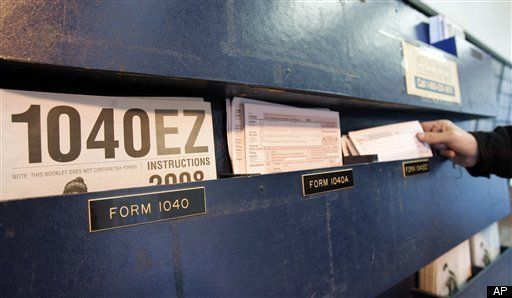
WASHINGTON -- Friday is the Treasury Department's Earned Income Tax Credit Appreciation Day, a celebration of what is arguably the U.S. government's largest antipoverty program. And consumer advocates say there is some reason to celebrate: Increased federal oversight, they say, should limit the share of those tax rebates that low-income taxpayers hand over to financial professionals.
In 2008, 24 million families were refunded some $49 billion under the EITC. President Barack Obama's economic stimulus package expanded the program in order to help shield low-income families from the harshest fallout from the recession, boosting the program so that about 26 million families received approximately $59 billion back for 2009. The expanded program was renewed through 2012 by the tax deal Obama cut with Republican leaders last month.
Low-income taxpayers frequently use tax-preparation services like Jackson Hewitt or H&R Block to help them file their taxes. On top of fees for that service, such companies frequently sell them loans known as Refund Anticipation Loans or set up Refund Anticipation Checks -- temporary bank accounts that allow taxpayers who do not have bank accounts to receive their tax refunds.
In exchange for receiving their refund check immediately, however, the consumer leaves a piece of their total refund in the bank's account, much like a payday loan. A week or two later, when the full refund arrives, the bank deposits it and pockets the difference.
With fees of around $60 for a $1,500 tax refund, the annual interest rate on this very short-term loan can easily eclipse triple digits. Add in another $30 so that the RAL check can be deposited into a RAC, and $180 for tax preparation, and low-income taxpayers see hundreds of dollars in fees go to financial professionals.
"No other anti-poverty program requires its beneficiaries to pay for the cost of accessing the benefit, which includes both the drain created by [Refund Anticipation Loans] and by tax preparation fees," the National Consumer Law Center wrote in a 2010 report.
According to that report, 44 percent of taxpayers who receive the EITC take out either a RAL or a RAC. RALs drained $507 million from the EITC program in 2008, according to the NCLC, while roughly another $1 billion in EITC funds went to pay for tax prep. That's a conservative estimate, in that it only includes prep fees for taxpayers who received a RAL -- other EITC recipients may have paid to have their taxes done, but opted not to receive a RAL.
RAL use has been long bemoaned by consumer advocates, who argue that many taxpayers do not realize they are receiving a loan rather than their own refund check, and that many others have relatively simple tax returns that they could do for free on their own. But the tax-preparation industry and the RAL business may finally be on the decline.
JPMorgan Chase, formerly the largest bank to offer RALs, bowed out of the business last year after facing allegations from consumer advocates that it was preying on poor people. The Office of the Comptroller of the Currency, often viewed as uninterested in consumer-protection issues, issued a direct order banning British banking giant HSBC from extending RALs in the United States. HSBC had sold RALs through H&R Block.
Only three banks will offer RALs at all this tax season: Republic Bank & Trust, River City Bank and Ohio Valley Bank. Republic provides loans through Jackson Hewitt, but expects RALs to decrease this year.
The Treasury Department is also rolling out a new low-cost debit card program this year for taxpayers who do not have bank accounts that will allow them to process their tax returns without forking over big fees to banks.
